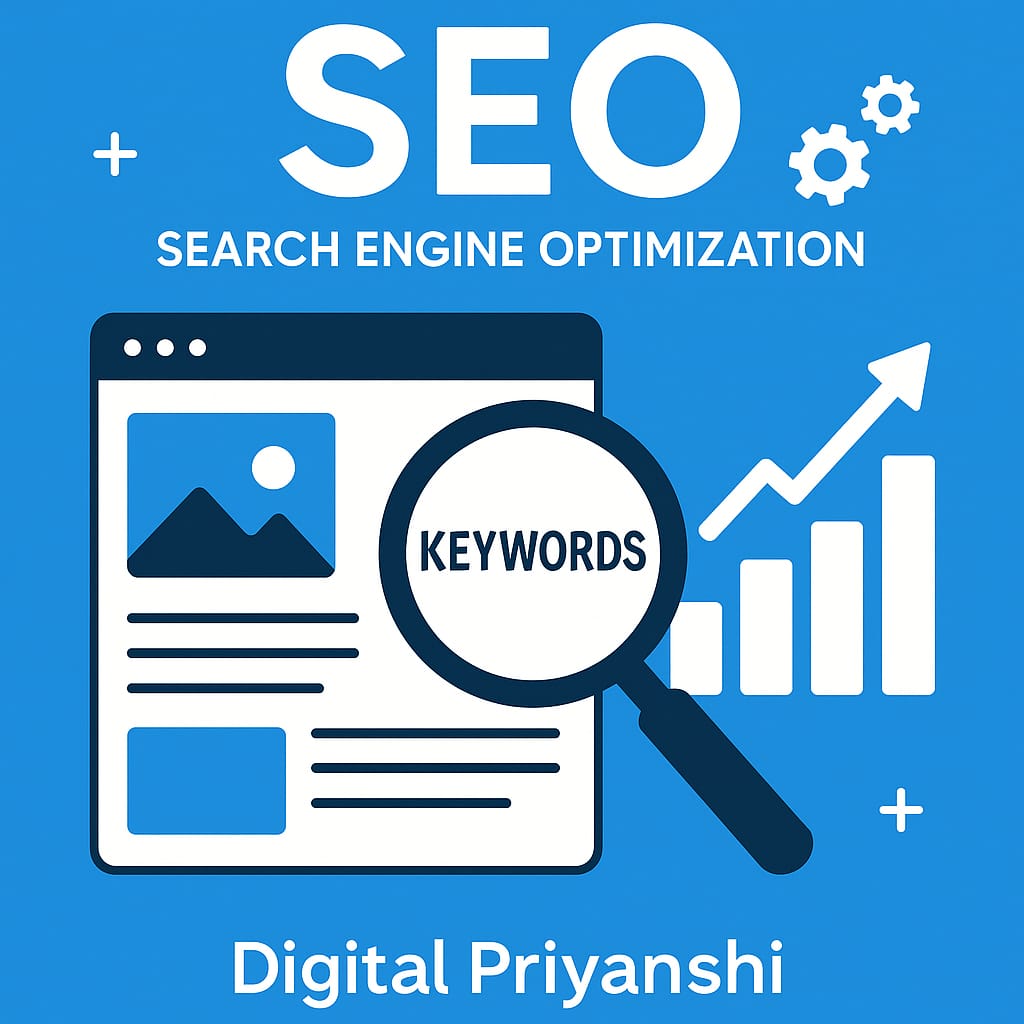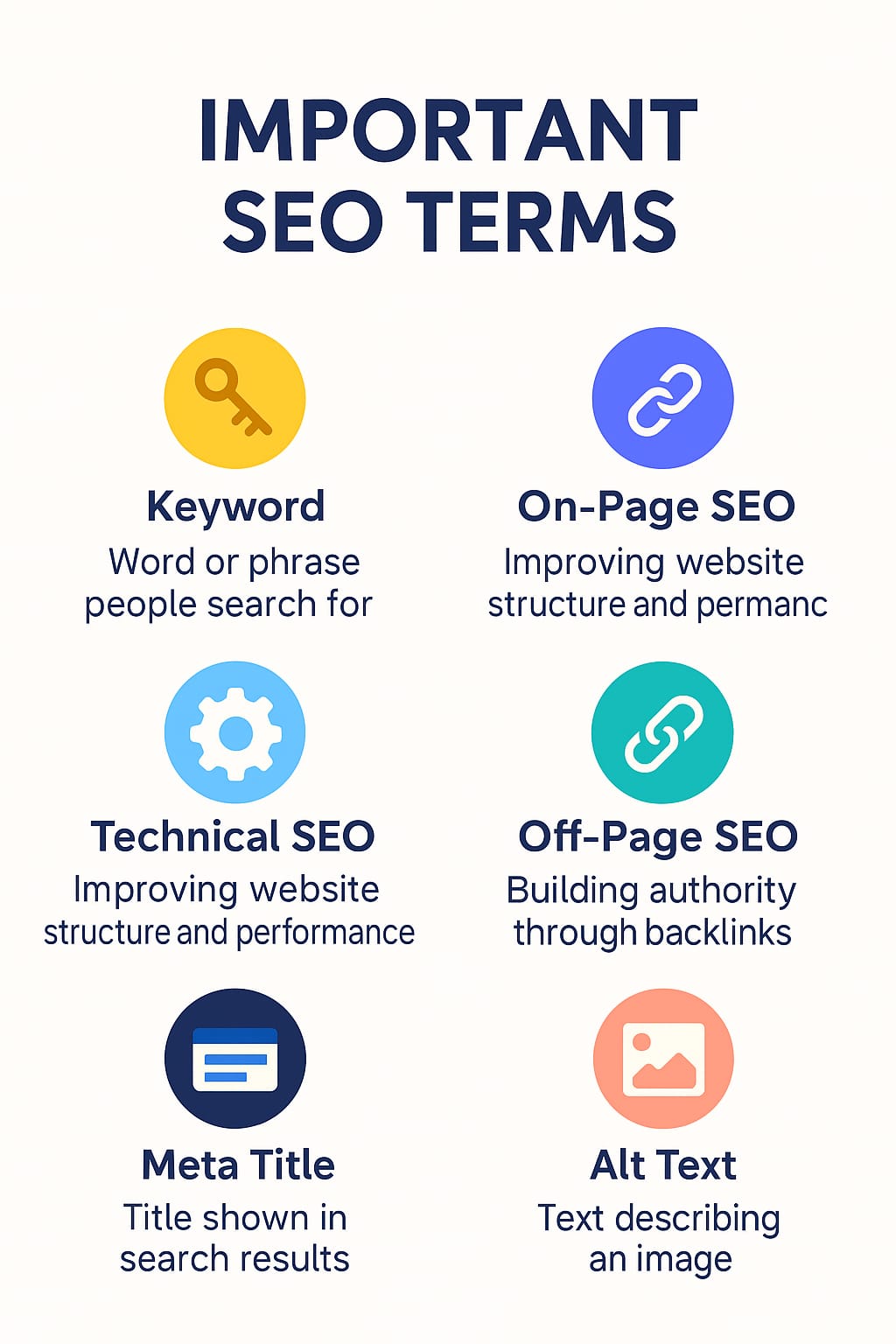Ever wondered how some websites always show up on the top of Google search results? That’s the power of SEO (Search Engine Optimization) — one of the most important tools in digital marketing today.
This blog is designed especially for beginners like you who are just starting their journey in the digital world. Let’s explore SEO in a simple and friendly way.

What is SEO?
SEO (Search Engine Optimization) means improving your website so that it ranks higher on search engines like Google, Bing, or Yahoo — without paying for ads.
When someone types something like “best beauty tips for glowing skin”, Google shows a list of websites. SEO helps your website appear in those results — preferably on the first page, because that’s where most people click!
Why is SEO Important?
Here are some key reasons why SEO is a must-have:
More Visibility, More Traffic
A well-optimized website appears higher in search results — which means more people see and visit your site.
Free & Organic Results
SEO helps you grow your business without spending money on ads. It’s long-term and budget-friendly.
Builds Trust & Credibility
People trust Google’s top results. If your site is there, they’ll trust you too.
Better User Experience
SEO focuses on fast loading, mobile-friendliness, and quality content — which makes users happy.
Attract the Right Audience
SEO brings people who are actually searching for what you offer. This means more leads and potential customers.
Important SEO Terms
To do SEO, you don’t need to know everything — just the basics. Here are some must-know SEO terms for beginners:

Keyword – The words or phrases people search for on Google. For example: “affordable digital marketing services in Delhi.”
On-Page SEO – Changes made on your website like adding keywords, writing good content, using headings, images, etc.
Off-Page SEO – Work done outside your website, like getting backlinks (when other websites link to yours).
Technical SEO – Back-end improvements like site speed, mobile-friendliness, SSL certificate, and sitemap that help Google understand your website better.
Meta Title & Meta Description – The title and short text that appears in search results. They should include your keywords and be attractive to click.
Alt Text – A short description of your image that helps Google understand what your image is about. This also improves accessibility.
Backlinks – When other websites link to your content. These links improve your authority in Google’s eyes.
Beginner-Friendly SEO Tips You Can Start With
You don’t have to be an expert to begin SEO. Start with these basic and easy tips:
1. Use the Right Keywords
- Find keywords that people are searching for.
- Add them in your blog titles, headings, content, and image alt text.
- Use tools like Ubersuggest or Google Keyword Planner to find good keywords.
👉 Example: If your blog is about “digital marketing basics,” use that exact phrase in your blog naturally.
2. Structure Your Blog Properly
- Use only one H1 tag (main title).
- Break your content using H2 and H3 headings.
- Keep paragraphs short (2–4 lines).
- Use bullet points, icons, and bold text to make content scannable.
Google and readers both love clean and organized content!
3. Add Internal Links
Even if your site is new, plan to link:
- One blog to another
- Blogs to service or about page
- Blogs to your homepage
You can add links later when other pages are live.
4. Write for People First, Then Google
Don’t overstuff keywords. Your content should be:
- Easy to read
- Helpful
- Real and honest
If people love your blog, Google will too.
5. Optimize Your Images
- Use compressed images so your site loads fast
- Always write alt text (only once per image )
- Make sure your images look good on phones
Mobile-friendliness is a Google ranking factor.
6. Check Technical Basics
- Use HTTPS (secure site with SSL)
- Submit your site to Google Search Console
- Use a mobile-responsive design
- Improve page speed by avoiding large files
This is called Technical SEO, and it’s just as important.
How to Learn SEO and Get Started
Starting with SEO might seem technical, but it’s totally possible even if you’re just beginning in digital marketing. Here’s how you can learn SEO step by step:
1. Understand the Basics
Start by learning what SEO is and how search engines work.
Focus on three core types: On-page, Off-page, and Technical SEO.
2. Follow Trusted Blogs & YouTube Channels
Read content from trusted sites like Yoast, Backlinko, and Moz.
Watch beginner-friendly SEO videos on YouTube (try “Simplilearn SEO” or “Neil Patel SEO”).
3. Take Free Courses
Enroll in free beginner courses like:
- Google Digital Unlocked – Fundamentals of Digital Marketing
- HubSpot SEO Course
- Yoast SEO for Beginners
4. Practice with Your Own Blog or Website
Start a blog (like you’re doing!) and apply what you learn.
Practice adding keywords, internal links, images with alt text, and basic meta descriptions.
5. Use Free Tools
Try these simple tools:
- Ubersuggest – For keyword research
- Google Search Console – For indexing
- Yoast SEO Plugin – If using WordPress
6. Stay Consistent
SEO takes time, so be patient.
Keep learning, keep testing.
The more you do it, the more confident you’ll become.
Final Thoughts
SEO is a powerful and free way to grow online. It doesn’t require you to be an expert from day one. Start simple, stay consistent, and keep learning. Whether you’re a student, a freelancer, or a small business owner—SEO can bring real results.
Written by Priyanshi Jain
Delhi, India | digitalpriyanshi.com